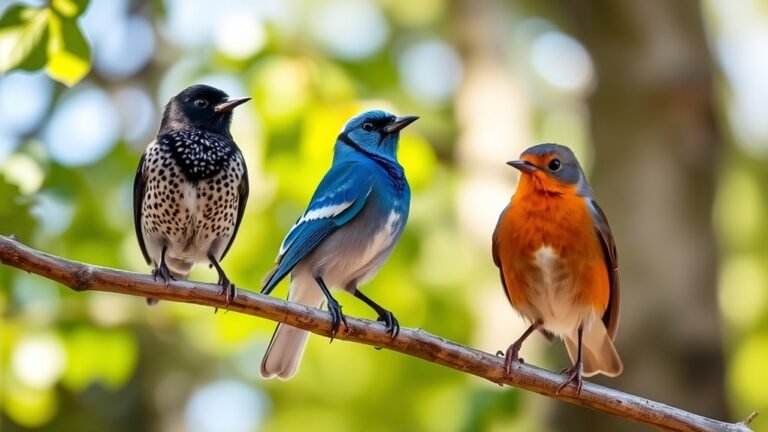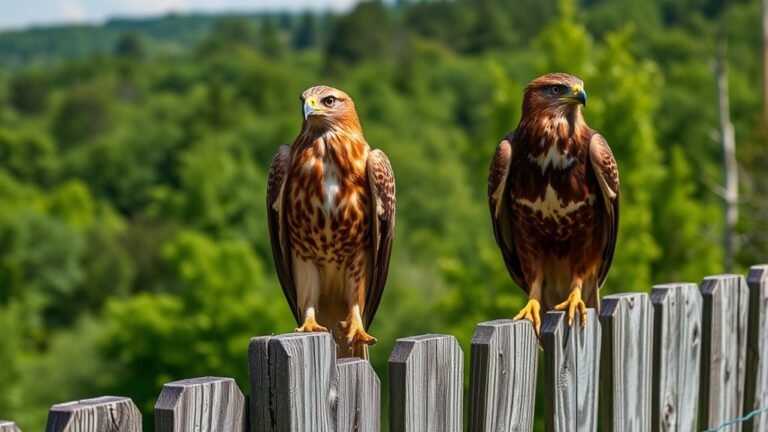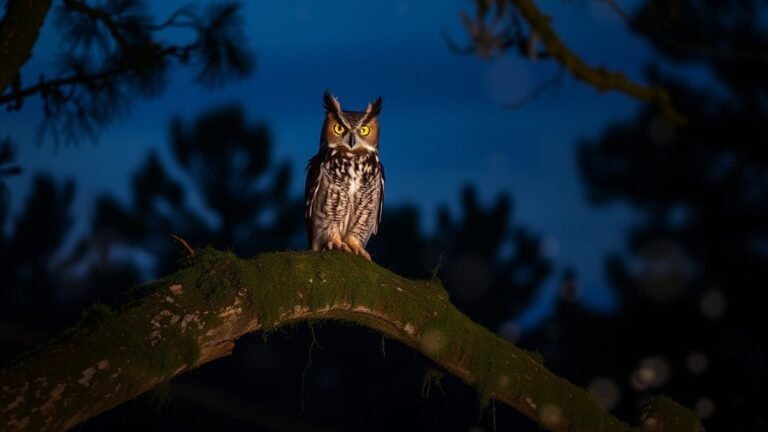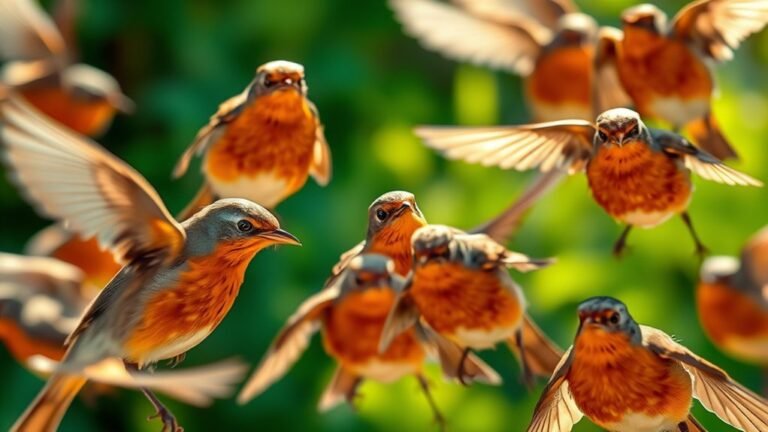The Common Loon: Facts and Habitats
The Common Loon is a beautiful bird with striking black and white feathers. When you see it, you might first notice its colors. But there's much more about this bird that is interesting. The Common Loon makes unique calls that can be heard across northern lakes. These calls serve important purposes, like communicating with other loons.
As you learn about how these birds breed and migrate, you will understand why it is crucial to protect their homes. The Common Loon faces several challenges during its seasonal travels. These challenges can make it harder for them to find food and safe places to nest. By knowing more about the Common Loon, we can help protect it and its habitat. Let's help keep these remarkable birds safe!
A Quick Overview
Common Loons are beautiful birds. They have a striking black and white look during breeding season. Their long bodies help them swim well in the water.
Loons have interesting calls. These sounds help them find mates and protect their home areas. They can dive deep underwater, sometimes going more than 200 feet down! They can hold their breath for up to five minutes while they hunt for food.
When it's time to lay eggs, loons choose spots that blend in with their surroundings close to the shore. They usually lay one to three eggs, and both mom and dad take turns keeping them warm.
Common Loons travel far each year, often over 1,000 miles, to find the best places to breed and eat. This journey shows why it's important to protect their homes. Taking care of their habitats helps them thrive and stay safe.
Unique Physical Characteristics of the Common Loon

The Common Loon is a bird you can easily spot thanks to its unique look. It has striking colors that change with the seasons. In the breeding season, its feathers show a bold black and white pattern. This bright coloring helps the loon hide in the water while it hunts for fish or tries to avoid predators.
The loon has a long, smooth body. This shape helps it move quickly and easily in the water. Its sharp, long bill is perfect for catching fish.
These features help the loon survive and add to the variety of wildlife in its habitat. For anyone who loves nature, seeing a Common Loon is truly special!
The Enigmatic Calls of the Common Loon
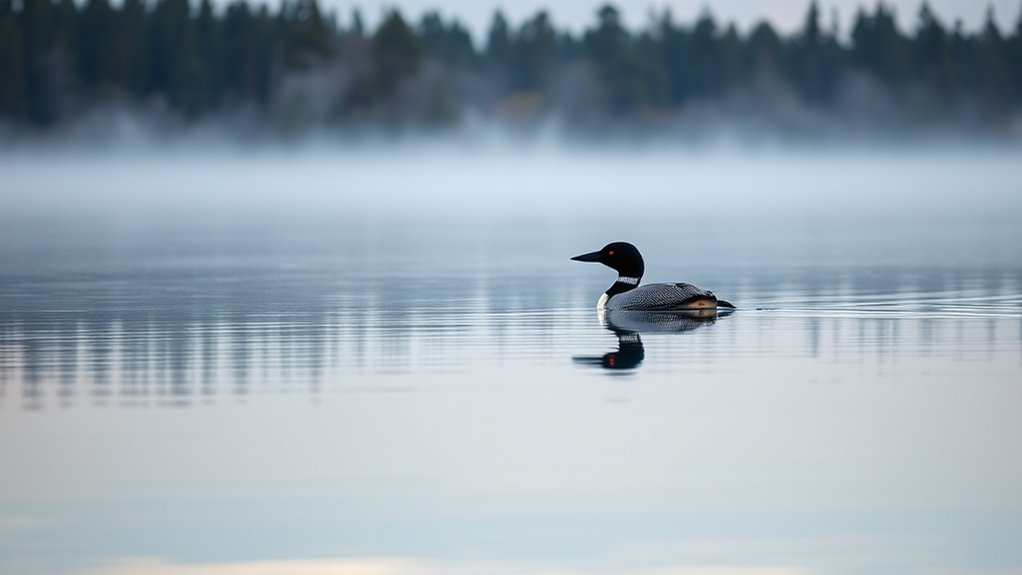
The Common Loon makes some of the most interesting sounds among birds in North America. Their calls can be eerie and beautiful, echoing across lakes. People who love birds and those who just enjoy nature are often drawn to these sounds.
Loon calls serve important purposes. The male loon sings to attract a mate. The female responds with her own sounds, creating a lovely duet. This helps them bond as a couple. Each call has a different meaning. Some calls show feelings like fear or mark their territory.
The Diving Abilities of the Common Loon

While you watch the Common Loon glide smoothly on the water, remember that this bird has some amazing diving skills. The Common Loon is great at hunting underwater and can dive deeper than 200 feet! Its body is built for swimming, and its strong legs help it move quickly beneath the waves.
This bird uses smart ways to find food, like chasing fish and swimming down to grab small creatures called invertebrates. The Common Loon sees really well underwater, which helps it find its meals fast. It can even hold its breath for up to five minutes while diving.
Seeing a Common Loon in action shows just how skilled and adapted this bird is. Watching these incredible moments makes you appreciate how special the Common Loon really is.
Breeding and Nesting Habits
The Common Loon is a fascinating bird, especially when it comes to breeding and nesting. They carefully choose their nesting spots, often on small islands or along lake shores. These places help protect their eggs from predators.
They make their nests by digging shallow holes and lining them with plants. This camouflage helps hide the eggs.
The female loon lays one to three eggs, and both parents take turns sitting on them to keep them warm. This incubation period lasts about 28 to 30 days.
During this time, the loons stay alert to keep their eggs safe. Watching them care for their young can be a beautiful experience, as they balance their responsibilities in nature.
It's a great reminder of how all living things work together in our environment.
Migratory Patterns of the Common Loon
As the seasons change, the Common Loon shows amazing skills for moving between places. These birds fly long distances, often over 1,000 miles, from their homes where they've babies to where they find food in winter.
In spring, you can see them come back to northern lakes. They return because they need spots to build their nests.
When autumn comes and it gets colder, the loons fly south to find warmer places. They look for coastal waters and big lakes where they can easily find food and stay safe from freezing.
Watching how they travel each season helps us see how strong they're and how much they depend on different habitats.
Preferred Habitats and Environmental Needs
The Common Loon loves to live in certain places that help it breed and eat. You'll mostly find them on freshwater lakes. They prefer lakes with deep waters full of fish. These ideal spots often have rocky shores or floating plants, which are great for nesting.
To keep loons safe, we need to protect their habitats. By making sure these lakes stay clean and healthy, we help loons find good places to lay eggs and find food.
If you want to help the Common Loon, you can support clean lakes. Joining local conservation groups is a great way to help. This not only keeps nature safe but also helps you feel connected to your community and the outdoors.
The Role of the Common Loon in the Ecosystem
Protecting the Common Loon's home helps the loon and keeps freshwater areas healthy. The loon is a top predator, and it plays a big part in how fish live and grow. By controlling fish numbers, loons help keep the water ecosystem balanced and clean.
Loons also act like canaries in the coal mine. When their numbers go down, it can mean something is wrong with the water or the area they live in. This could be from pollution or other problems.
When you care for the Common Loon, you help create a strong ecosystem. This supports many plants and animals. Your actions help save these beautiful birds and their important role in nature.
Frequently Asked Questions
What Is the Lifespan of a Common Loon?
The common loon lives for about 15 to 30 years. These birds are known for their special sounds. They use their calls to keep safe from predators. Their vocalizations also help them raise their young successfully. This helps them thrive in their natural habitats.
How Do Common Loons Find Their Food Underwater?
Common loons are amazing divers. They dive deep into the water to find their food. Their sharp eyesight helps them see fish clearly underwater. This ability helps them catch their meals and stay alive in lakes and other watery places. Watching them dive is quite fascinating!
Are Common Loons Social Birds?
Common loons are interesting birds that show different ways of living together. They can be alone, but you often see them in pairs or small groups. This helps them talk to each other and work together. They do this to protect their homes and make sure their nests are safe. So, while they can enjoy being by themselves, they also like to be around a few friends.
What Threats Do Common Loons Face in the Wild?
Common loons face big challenges in the wild. Two major threats are habitat loss and pollution.
Habitat loss happens when people develop land for homes, roads, or farms. This makes it hard for loons to find places to nest and raise their young. They need clean, safe water to fish and live.
Pollution is another serious issue. Chemicals and waste in the water can harm loons and their food. This pollution can make it unsafe for them to eat or even drink.
These problems not only affect loons but also the entire ecosystem they live in. When loons struggle, other animals and plants may suffer too. It's important to protect loons and their habitat for a healthy environment.
How Can I Help Protect Common Loons?
You can help common loons by supporting groups that protect their homes. Join local volunteers who work to keep nesting areas safe. Spread the word about why these birds matter. Also, be mindful when you're near lakes. Less noise and activity can help these beautiful birds live and raise their young peacefully. Every little bit helps!

Luna is the passionate founder and author of Birds and You, a website dedicated to sharing her love for birds with fellow enthusiasts. Through her engaging articles and guides, she aims to educate and inspire others to explore the fascinating world of birds. When she’s not writing, you can find Luna observing birds in their natural habitats or sharing beautiful bird photography on Pinterest. Join her on this journey to celebrate and protect our feathered friends!


